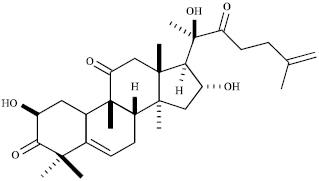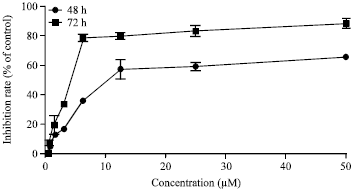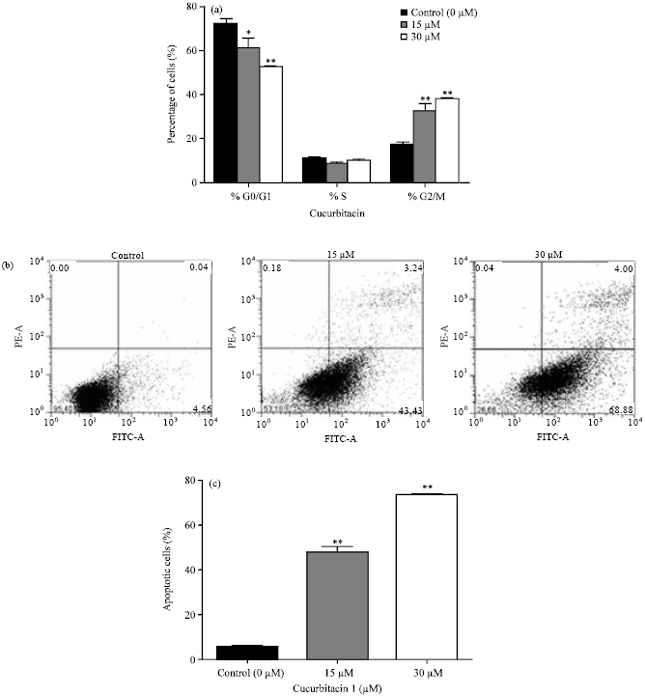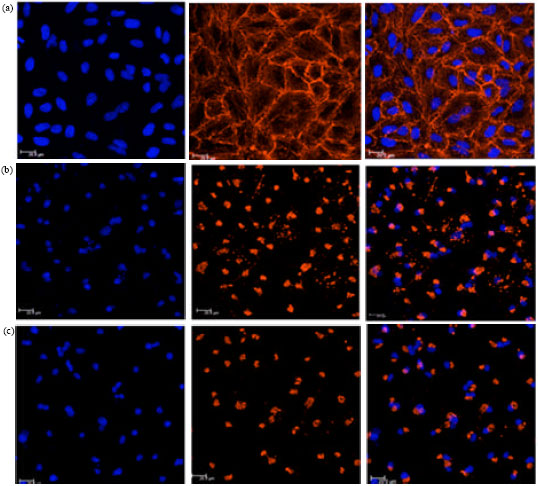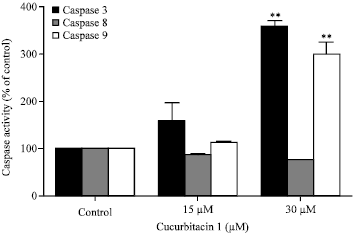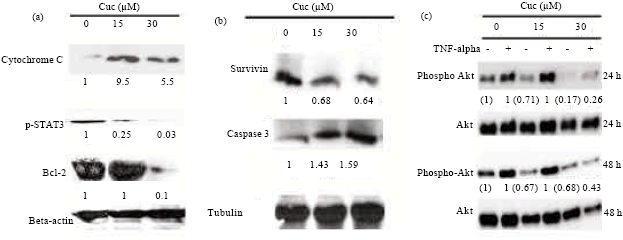Research Article
Proliferative Inhibition and Apoptotic Mechanism on Human Non-small-cell Lung Cancer (A549 Cells) of a Novel Cucurbitacin from Wilbrandia ebracteata Cogn
Department of Pharmaceutical Sciences, Universidade Federal de Santa Catarina, Florianopolis, SC, Brazil
Marina R. Teixeira
Department of Pharmaceutical Sciences, Universidade Federal de Santa Catarina, Florianopolis, SC, Brazil
Karen L. Lang
Department of Chemistry, Universidade Federal de Santa Catarina, Florianopolis, SC, Brazil
Tatiana da R. Guimaraes
Department of Pharmaceutical Sciences, Universidade Federal de Santa Catarina, Florianopolis, SC, Brazil
Sabine E. Dudek
Institute of Molecular Virology (IMV), Center of Molecular Biology of Inflammation (ZMBE), University of Muenster, D-48149 Muenster, Germany
Fernando J. Duran
UMYMFOR-Department of Organic Chemistry, Universidad de Buenos Aires, Buenos Aires, Argentina
Stephan Ludwig
Institute of Molecular Virology (IMV), Center of Molecular Biology of Inflammation (ZMBE), University of Muenster, D-48149 Muenster, Germany
Miguel S.B. Caro
Department of Chemistry, Universidade Federal de Santa Catarina, Florianopolis, SC, Brazil
Eloir P. Schenkel
Department of Pharmaceutical Sciences, Universidade Federal de Santa Catarina, Florianopolis, SC, Brazil
Claudia M.O. Simoes
Department of Pharmaceutical Sciences, Universidade Federal de Santa Catarina, Florianopolis, SC, Brazil









